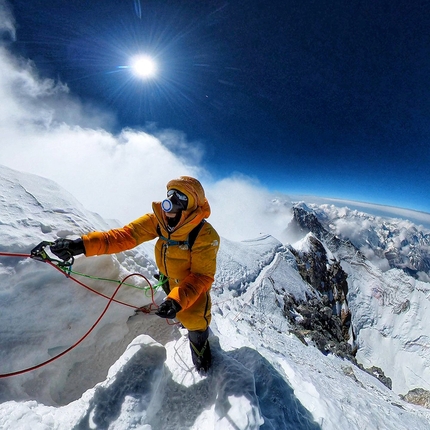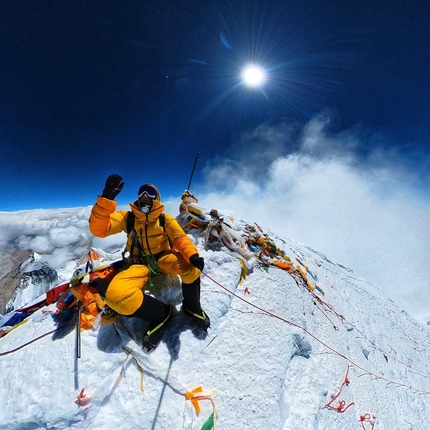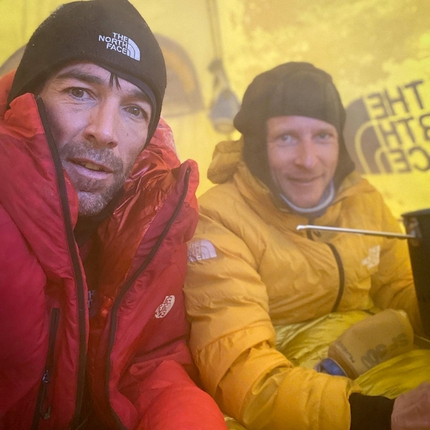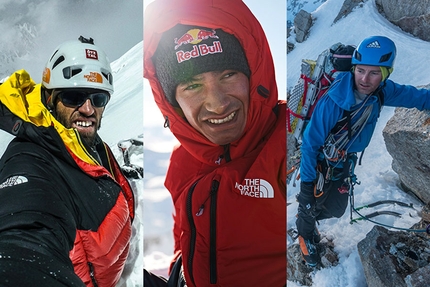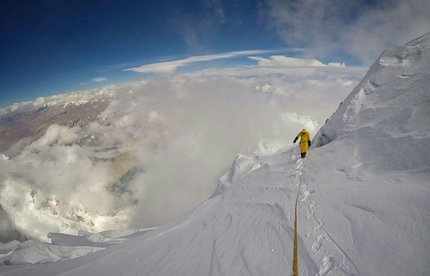Hervé Barmasse, David Göttler and their Dhaulagiri winter alpine style attempt
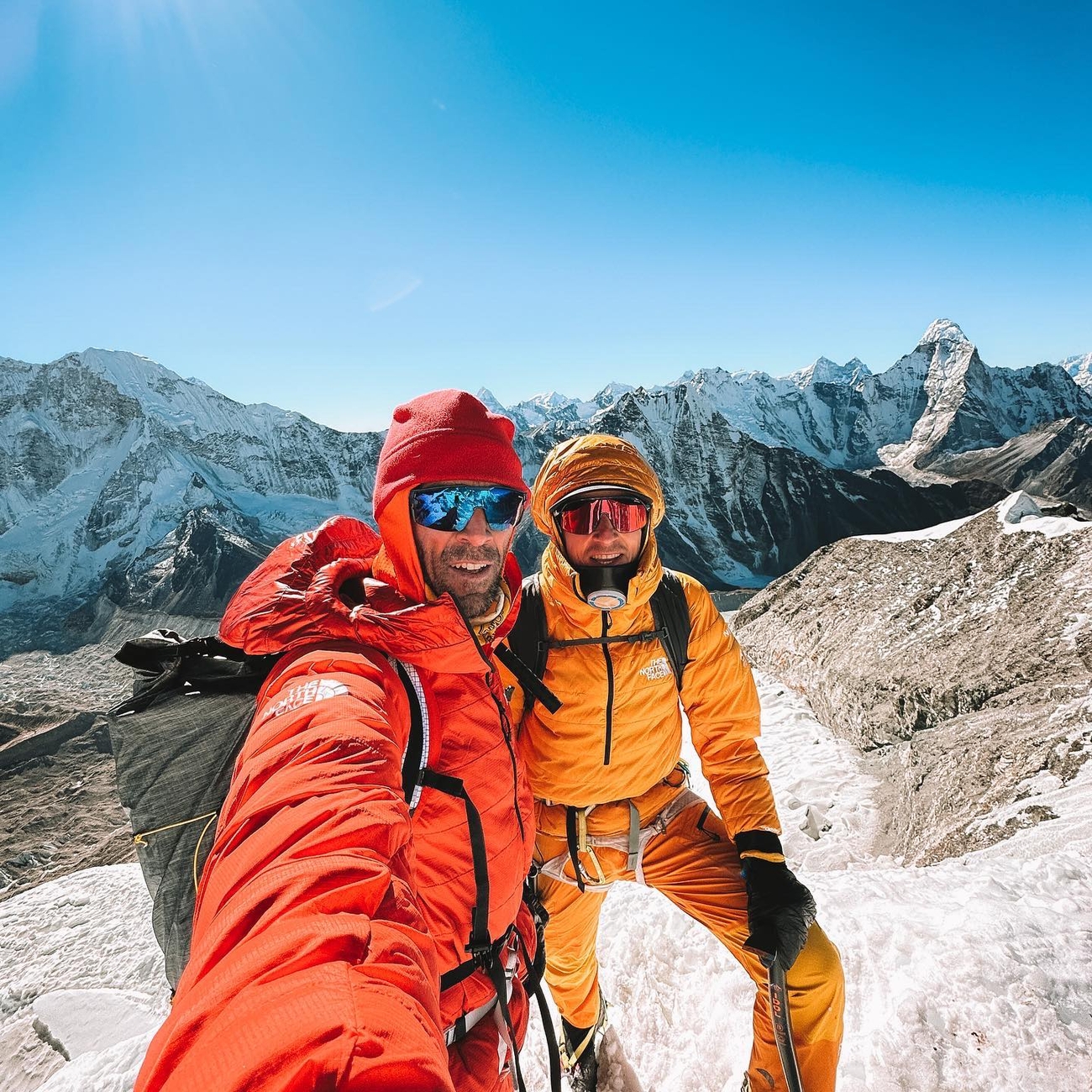
 1 / 10
1 / 10 archivio Hervé Barmasse
archivio Hervé Barmasse
A year after abandoning their attempt of the Nanga Parbat’s Rupal Face in winter, Italy’s Hervé Barmasse and Germany’s David Göttler are once again exploring their limits on of the Earth’s highest mountains. After having failed to receive a permit for Pakistan, the two traveled to the foot of Dhaulagiri with the ambitious goal of climbing the seventh highest mountain in the world on their own, without any external help and without supplementary oxygen. I.e. in perfect alpine style.
First of all how are you? What’s the weather like, how’s morale?
Hervé: We are very well, thanks. After acclimatising in the Khumbu valley we lost day or two at Kathmandu waiting to fly to Pakistan, before being denied permission to attempt Nanga Parbat. Once we arrived here at Dhaulagiri we were lucky enough to have beautiful weather and we quickly climbed up to Camp 2 at 6200 meters. Now though the weather has changed significantly: high winds with peaks of 200km/h and snowfall
An 8000er in winter, above all, in alpine style... You’ve set the bar pretty high! How come? What does attempting something like this mean to you?
Hervé: The idea of alpine style in winter represents the next step compare to what we have seen so far on the highest mountains in the world in the coldest season. But it's not just a question of style linked to performance. The choice is to try to respect the mountain leaving it intact when we’ve finished, completely clean. It's not easy, we know.
So, how do difficulties increase with this style of climbing?
Hervé: First off, it’s worth remembering what the prerequisite are for alpine style: being alone on the mountain you want to climb; the team is comprised of a maximum of three (we are two); no pre-established camp; no outside support; no fixed ropes. And, of course, no supplementary oxygen. If you make attempts, all the gear must be brought back to basecamp and you start again as if it were the first time. A quick glance at these characteristics, in particular the first one, suffices to comprehend why this style is far more difficult, not only from a physical but also from a mental point of view. The slightest mistake and you’ve messed up. Nobody can help you and you have to rely solely on your ability to be completely autonomous on the mountain.
David, in 2008 you summited Dhaulagiri with Gerlinde Kaltenbrunner. What do you remember about the climb and the mountain?
David: It was one of my most beautiful expeditions, and also my fastest on an 8000er. Everything worked fine. No surprises, great weather. Only good memories I’d say.
Hervé, for you it’s your first time here. What do you know about the seventh highest mountain in the world? And what are you hoping for?
Hervé: The stories related to the first ascent are incredible. At the time it was thought that the only possible style was the large Himalayan expedition, and the organisation was massive. But let's be careful not to make comparisons with today's Himalayan mountaineering. The first ascent took place in a different era. And however big those expeditions may have seemed, they still had less environmental impact than modern expeditions on normal routes nowadays. Apart from the first ascent, the history of this mountain is littered with a series of impressive undertakings, including the winter ascents. For example, the solo ascent on the South Face carried out by Tomaž Humar, or the West Face routes forged alpine-style, to name just a few. This mountain has been the scene of precious top-level mountaineering achievements. Exceptional feats, almost without parallels. Personally I hope to continue to be consistent with what I have always set out to do on the 800ers, and manage to climb this stupendous mountain in alpine style.
David, last year you summited Everest without supplemental oxygen. How difficult was it physically? How do you think Dhaulagiri might compare?
David: Climbing Everest was definitely not easy for me. Having said that, it is nearly impossible to compare that expedition with this one on Dhaulagiri. They are almost two completely different disciplines. Both have beauty and challenges.
The two of you have been on several expeditions together. What do you guys have in common?
David: For me it's great to have someone who shares the same values, or be with someone who at times even more extreme than me ;-). When we’re in the mountains we work together like clockwork, and we know that we don't have to prove anything to each other. This makes life very easy during the expeditions and is a big plus for our personal safety.
Hervé: Ever since our first expedition together on the South Face of Shishapangma, we’ve always worked together extremely harmoniously, because we instinctively behave in the same way up in the mountains. We know how to move independently when we need to, and how to help one another if someone is having a bad day. We not just a pair of climbers, we’re friends.
Last winter your objective was Nanga Parbat. This year you didn’t go there, mainly because you didn’t receive a climbing permit for Pakistan. What though did that experience teach you, and how easy or difficult was it abandon your attempt last year?
Hervé: Climbing Nanga Parbat, and in particular its Rupal face, in alpine style and in winter, represent the dream of a lifetime. Unfortunately this year we didn’t get a permit, not because we’re not welcome in Pakistan of course, but for our safety seeing that recently they’ve experienced problems in that region with the Taliban. The memories of the murder of climbers a few years ago at base camp are still fresh, so we were forced to change plans. But last year's attempt taught us a lot... we’ll use all the experience gained to the fullest here, on Dhaulagiri.
Dhaulagiri is famous for being a cold mountain... How important is gear?
Hervé: Clothing, technology and equipment are highly important. David and I are always trying to make improvements on everything we use. From boots and soles, to clothes, tents, down sleeping bags and mountaineering equipment. We’re always trying to optimise maximum performance with minimum weight. As to the gear we’ll be using: we’ll climb with an ice axe, crampons, one ice screw, three carabiners, one quickdraw, one sling, one 60m rope. That's all you need to climb an 8000m peak alpine style, even in winter.
Talking of gear, if we're not mistaken you also helped design and test the new The North Face clothing line…
Hervé: The project came to life a few years ago. At the beginning we were a team of six climbers including Hansjörg Auer, David Lama and Jess Roskelley, as well as Andres Marin who is still part of the project. The idea was to test and make changes until we had the maximum result for fast and technical mountaineering at high altitudes. And that’s precisely what we did. The final expedition to celebrate what we’d done should have been to Masherbrum, but our climbing partners tragically died and consequently that dream was shattered. Luckily the work we’d done remained and thus the first AMK line was born. Both David and I have been using it for more than three years now: its versatility and the excellent choice of materials have meant that it’s become our first choice for when we’re up in the mountains, always and in any condition. With The North Face we are continuing to help develop the next collections, and will make another step forward soon.
You guys are communicating a lot during this expedition. How do you combine exploration and communication, the search for adventure and the international media?
David: It's great to show and share with more people what we are experiencing out here. We hope that, like this, we might inspire people to go out and experience their own adventures, and also maybe learn a little more about mountaineering. This possibility we have nowadays to comunicate more easily than in the past is an opportunity, but it also brings with it the responsibility of being honest and respectful towards the mountains, the history of mountaineering and the people who have helped shape it.
Hervé, a while ago you spoke to us about the lure of unpredictable mountaineering. Is this what you’ll be looking for on the slopes of Dhaulagiri?
Hervé: What I'm searching for is a form of mountaineering that is exploratory. In order to be successful in the Himalayas you must have rigorous ethics and values that go beyond mountaineering. It's not just about what we do, but also about how we do it. On the one hand there’s the goal of reaching the summit, which must be balanced on the other hand by a respect for the mountain. Today, on the highest mountains in the world, most mountaineers (amateurs, professionals and mountain guides) continue to do what was being done in the 1950s, but with better technology, following a trail that is always beaten and equipped by Sherpas. This style of climbing gave rise to mass mountaineering and the ensuing “standardisation” of the mountains (everyone uses fixed ropes, which are then abandoned, on the normal routes) and tons of rubbish. In this form of mountaineering there is no adventure, none of the uncertainty associated with alpine style.
Last question, then we leave you to concentrate on your expedition: what are conditions like on the mountain?
Hervé: Until a few days ago they were perfect, but now everything has changed. We’ll see what lies in store…PRIME SALITE
8000er WINTER ASCENTS
1980 Everest - Krzysztof Wielicki, Leszek Cichy (POL) 17/02/1980
1984 Manaslu - Maciej Berbeka, Ryszard Gajewski (POL) 12/01/1984
1985 Dhaulagiri - Andrzej Czok, Jerzy Kukuczka (POL) 21/01/1985
1985 Cho Oyu - Maciej Berbeka, Maciej Pawlikowski (POL) 12/02/1985
1986 Kangchenjunga - Krzysztof Wielicki, Jerzy Kukuczka (POL) 11/01/1986
1987 Annapurna - Jerzy Kukuczka, Artur Hajzer (POL) 03/02/1987
1988 Lhotse - Krzysztof Wielicki (POL) 31/12/1988
2005 Shisha Pangma - Piotr Morawski (POL), Simone Moro (ITA) 14/01/2005
2009 Makalu - Simone Moro (Ita), Denis Urubko (KAZ) 09/02/2009
2011 Gasherbrum II - Simone Moro (ITA), Denis Urubko (KAZ), Cory Richards (USA) 02/02/2011
2012 Gasherbrum I - Adam Bielecki, Janusz Golab (POL) 09/03/2012
2013 Broad Peak - Maciej Berbeka, Adam Bielecki, Tomasz Kowalski e Artur Malek (POL) 05/03/2013
2016 Nanga Parbat - Simone Moro (ITA), Muhammad Ali Sadpara (PAK), Alex Txikon (ESP) 26/02/2016
2021 K2 - Nirmal Purja, Mingma David Sherpa, Mingma Tenzi Sherpa, Geljen Sherpa, Pem Chiri Sherpa, Dawa Temba Sherpa, Mingma G, Dawa Tenjin Sherpa, Kilu Pemba Sherpa, Sona Sherpa (NEPAL) 16/01/2021



 Copia link
Copia link

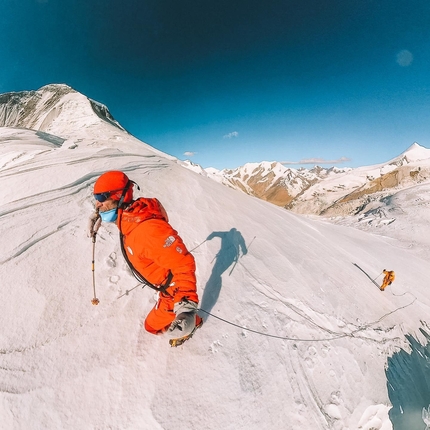
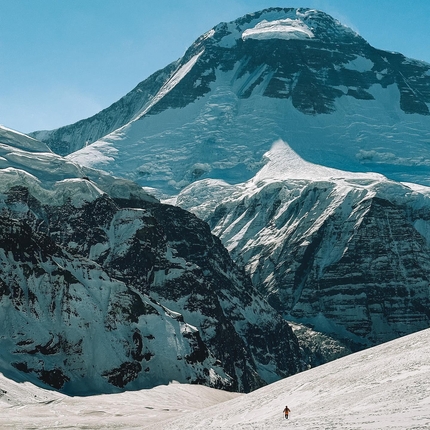
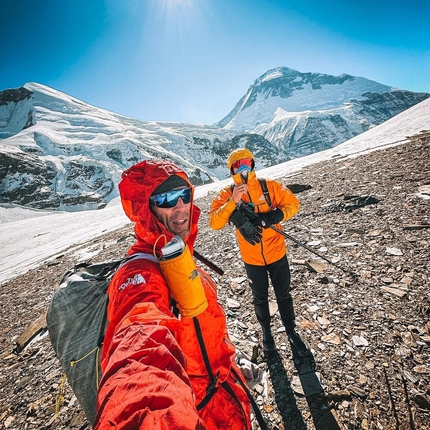
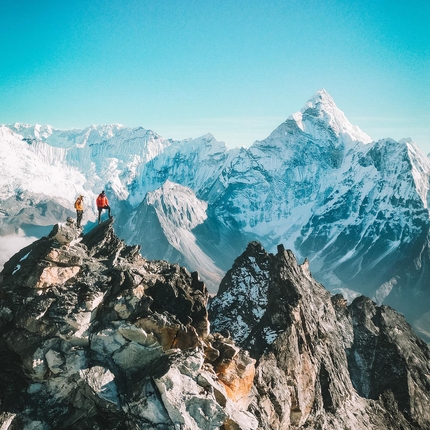
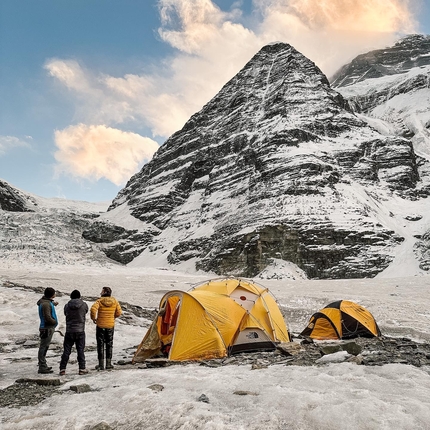
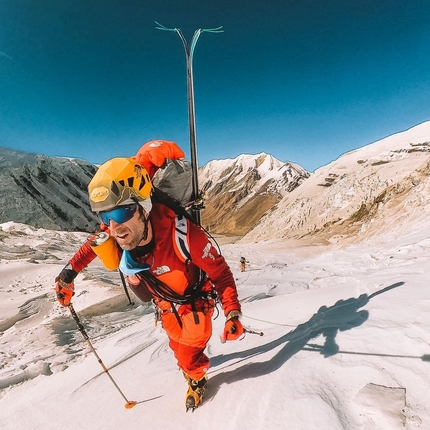
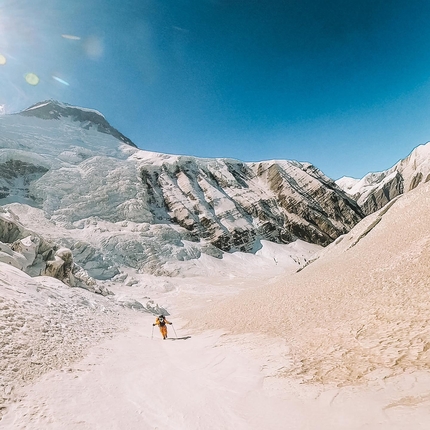
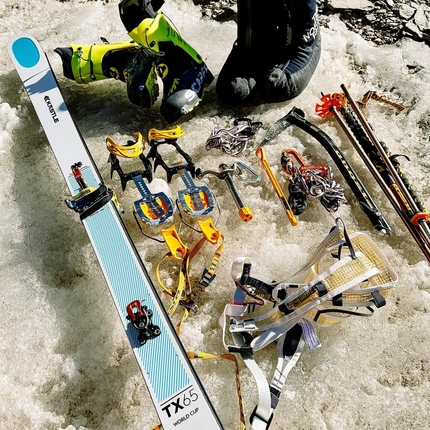
 See all photos
See all photos